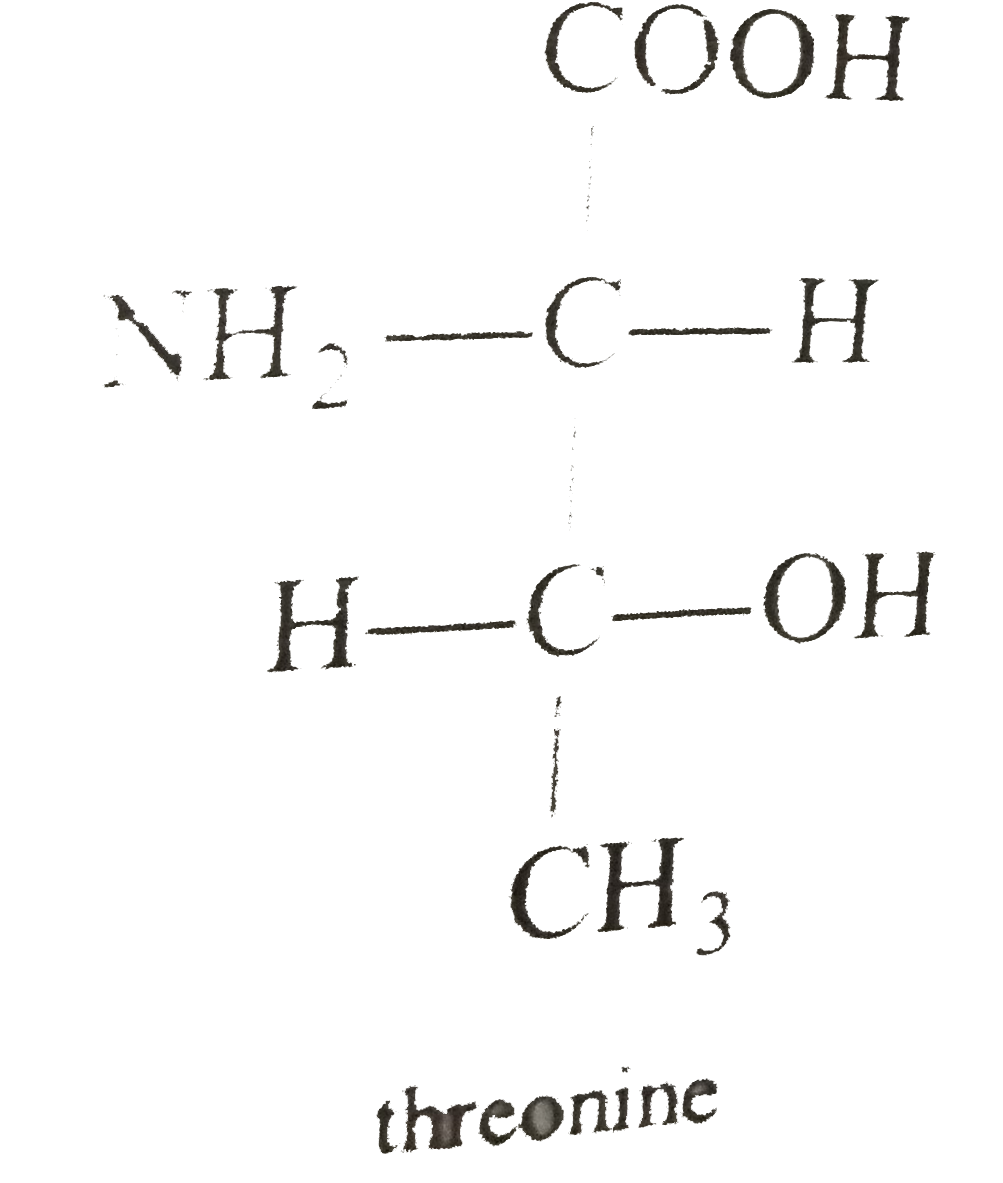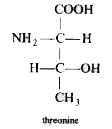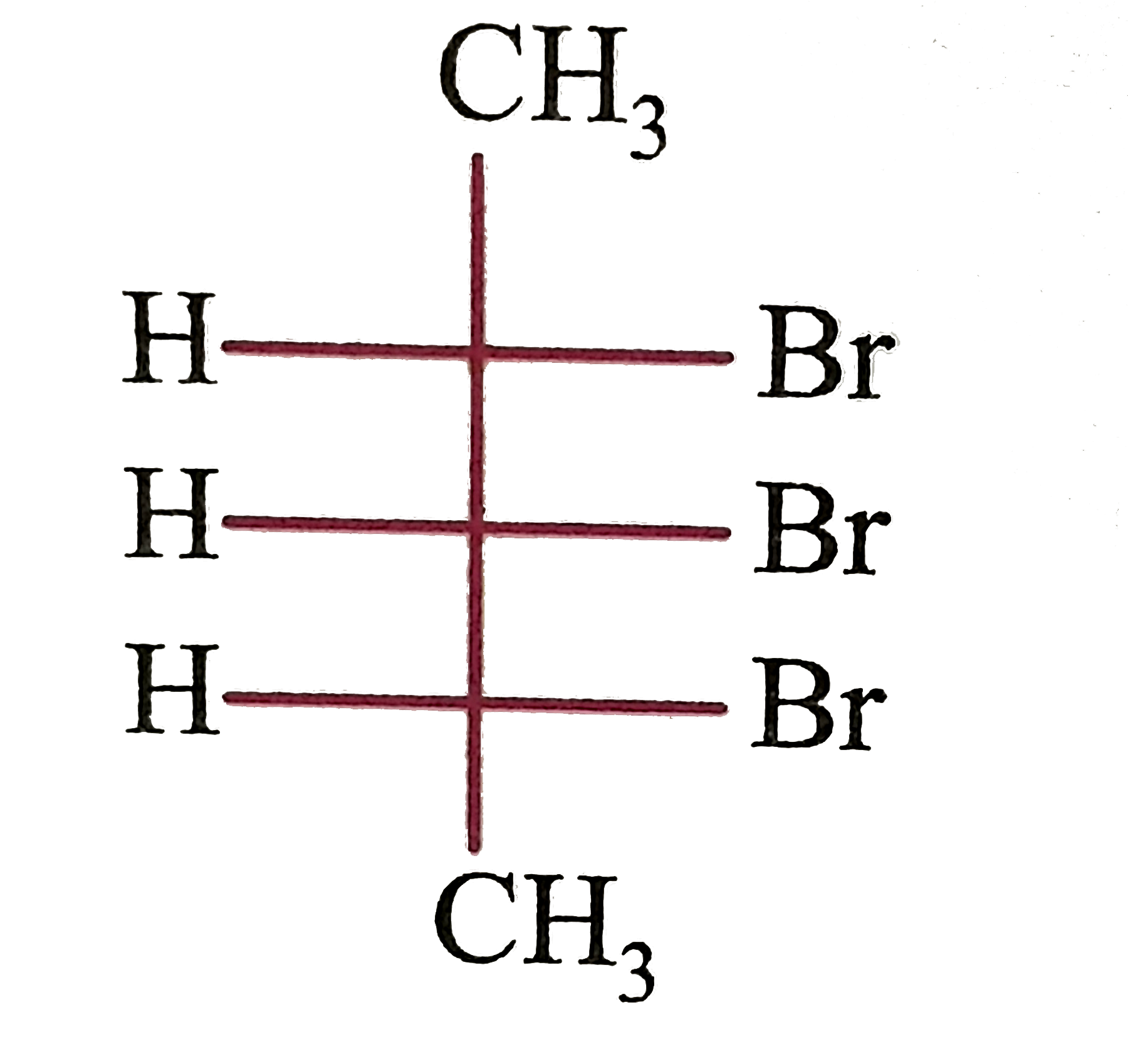Thereonine is as naturally occuring amino acid that contains two sterogenic centers.

(a) Label the two sterogenic centers in threorine. .
(b) Draw all possible stereoisomers and assingn the R, S configuration to each isomer.
(c) Only the 2S, 3R isomer of theronine occurs in nature. (Numbering being at the COOH group.). Which isomer in part (b) is naturally occurring?
The correct Answer is:
Topper's Solved these Questions
Similar Questions
Threonine is a naturally occurring amino acid that contains two stereogenic centers.

Label the two stereogenic centers in threorine.
View SolutionOleic acid and eladic acid are naturally occuring compounds which are isolated from various oils and fats.
Both diastereomers have one double bond at C−9. Oleic acid is cis and eladic acid is a trans isomer at C−9. Both have molecular formula C17H33COOH. Synthesise both from ethyne.
View Solution
Knowledge Check
This section contains Assertion and Reason type questions, Each question has 4 choices (1), (2), (3) and (4), out of which only one is correct.
Assertion (A) Acetic acid and methyl formate are functional isomers.
Reason (R) Functional isomers differ in the position of carbonyl group.ABoth Assertion and Reason are true and Reason is the correct explanation of the nAssertionBBoth Assertion and Reason are true but Reason is not the correct explanation of AssertionCAssertion is correct but Reason is incorrectDReason is correct and Assertion is incorrectAn organic compound having a carbon attached to four different group is optically actve, But is it that opposite is also true? That is, do all optically active organic compounds have chiral carbons? Not necessarily. Presence or absence of chiral centre is not the sufficiet criterion for optical activity. The ultimate criterion is presence or abosence of either plane or centre of symmtry. Two compounds which are non super im[osabble mirror images of each other are called enantiomers. If a compound contains more than one chiral carbon, new words are required to describe the relationship between various stereo isomers of the compounds. Those words are diastereomers and mesomers.

In the above compound no. of stereogenic centers and no. of optical active isomers possible are.A3,8B3,6C3,2D2,4Stereoisomers, which can be interconverted simply by rotation about sigma bonds, are confomational isomers while those, which can be converted only by breaking and remaking of bonds and not simply by rotation, are called configurational isomers.
The angle between C-C and C-H bonds on adjacent carbon atoms in any conformation is called dihedral angle.
The cyclic compounds most commonly found in nature containing six membered rings can exist in a conflormation that is almost completely free of strain. the most stable conformation of cyclohexane is chair form.
According to Bayer strain theory, the greater deviation from the normal tetrahedral angle, greater is the angle strain or torsional strain and hence lesser is the stability of the cycloalkane.
Dihedral angle between two methyl groups of n-butane in the gauche and anti forms are:A60∘,0∘B60∘,180∘C0∘,60∘D180∘,60∘
Oleic acid and eladic acid are naturally occuring compounds which are isolated from various oils and fats.
Both diastereomers have one double bond at C−9. Oleic acid is cis and eladic acid is a trans isomer at C−9. Both have molecular formula C17H33COOH. Synthesise both from ethyne.
View SolutionIn this section each item consists of six sentences of a passage. The first and sixth sentences are given in the beginning as S1 and S6. The middle four sentences in each have been jumbled up and labelled P, Q, R and S. You are required to find the proper sequence of the four sentences and mark your response accordingly on the Answer Sheet.
S1 : There have been two schools of thought which deal with the errors of learners.
S6 : Both views are popular today but the second is gaining ground fast.
P : The philosophy of the second school is that errors are natural and they will occur in any learning.
Q : So errors, they say, is a sign of faulty teaching methods.
R : The first school maintains that if teaching methods are perfect, errors will never occur.
S : They argue that we should concentrate on how to deal with errors, instead of on method of teaching.
The correct sequence should be (a) Q S R P (b) P S Q R (c)!Q P S R (d) R Q P S
View SolutionDraw the structures of the nine isomeric heptanes (C7H16).
Strategy: start with the straight chain isomer (longest chain). Going to a six-carbon chain, a CH3 may be placed either on C−2 or on C−3 to give two isomers. Starting with a five-carbon chain, either two CH3, or a CH3CH2 must be added as side chain for a total of seven C's. The two CH3 may be placed on the same C atom or on different carbons giving a total of four isomers. The CH3CH2 group can only be placed on the central C atom. At other points it either lengtherns the chain or reproduces previous isomer.Finally, go for a four carbon chain and three CH3's to form the ninth isomer.
View SolutionThree beakers labelled as A, B and C each containing 25 mL of water were taken. A small amount of NaOH, anhydrous CuSO4 and NaCl were added to the beakers A, B and C respectively. It was observed that there was an increase in the temperature of the solutions contained in beakers A and B, whereas in case of beaker C, the temperature of the solution falls. Which one of the followig statement (s) is (are) correct?
1. In beakers A and B, exothermic process has occurred.
2. In beakers A and B, endothermic process has occurred.
3. In beaker C, exothermic process has occurred.
4. In beaker C, endothermic process has occurred.
View SolutionThree beakers labelled as A, B and C each containing 25 mL of water were taken. A small amount of NaOH, anhydrous CuSO4 and NaCl were added to the beakers A, B and C respectively. It was observed that there was an increase in the temperature of the solutions contained in beakers A and B, whereas in case of beaker C, the temperature of the solution falls. Which one of the followig statement (s) is (are) correct?
1. In beakers A and B, exothermic process has occurred.
2. In beakers A and B, endothermic process has occurred.
3. In beaker C, exothermic process has occurred.
4. In beaker C, endothermic process has occurred.
View Solution
